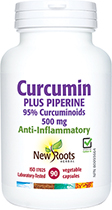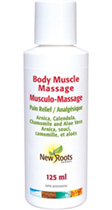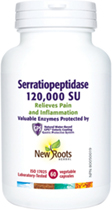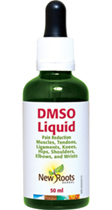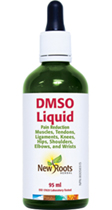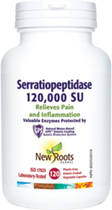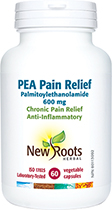Decoding Pain: Insights and Solutions
In Canada today, approximately 8 million people are living with chronic pain.[1] Pain can arise from various conditions and factors including but not limited to arthritis, back pain, fibromyalgia, nerve damage, musculoskeletal condition, autoimmune disease, and cancer treatment. However, it sometimes seems like there is no explanation as to why someone is experiencing pain.[2] Pain is something that has become more apparent during the COVID‑19 pandemic.[3] With the prevalence of chronic pain and the incidence of acute pain due to injury or illness, it is important that we understand what pain is and why we experience it, and learn how to reduce it.
A Primer on Pain
According to the International Association for the Study of Pain: “Pain is an unpleasant sensory and emotional experience associated with, or resembling that associated with, actual or potential tissue damage.”[4] Basically, pain is a subjective experience that begins with the activation of sensory nerves, but how it is perceived depends on other factors in a person’s life. In most of the tissues in our body we have receptors called nociceptors, that respond to harmful stimuli.[5] When we encounter a harmful stimulus, such as a hot stove, these receptors are activated and transmit to the spinal cord the signal that the tissues are damaged or at risk of becoming damaged.[6] From the spinal cord, these signals are transported to the brain, where we will perceive the sensation of pain.[7] These pathways that carry the stimulus travel through the limbic system, which is the system responsible for our emotional responses. This explains why different people respond to pain in different ways.[8]
One of the major contributors to pain is inflammation. We know that inflammation is a normal physiological response to infection or injury, but when it becomes chronic, so does the pain. Inflammation stimulates the release of prostaglandins, proinflammatory cytokines, and chemokines to help fight the invading bacteria or to help heal from tissue damage.[9] These chemical messengers will then activate the nociceptors and transmit the signals that lead to the perception of pain.[10]
Why Is Pain so Prevalent?
Our lifestyle may be to blame for our pain. We know that stress, obesity, smoking, and unhealthy diets have negative impacts on chronic pain.[11] Our North-American diets are typically high in processed and refined foods and low in fruits and vegetables.[12] As a result, the production of proinflammatory cytokines in our body rises, and this effect becomes more pronounced when we fail to consume antioxidant‑rich foods, which would otherwise promote the production of anti-inflammatory cytokines.[13] We also know that when our diet lacks certain vitamins or minerals such as B vitamins, omega‑3 fatty acids, vitamin D, or magnesium, there is an association with increased pain sensation.[14] Studies have shown that, when we supplement these nutrients in those who are deficient, there is a positive response for the reduction of pain.[15] We also know that eating probiotic-rich foods or supplementing with probiotics can support a healthy gut microbiota, resulting in a reduction in abdominal pain.[16]
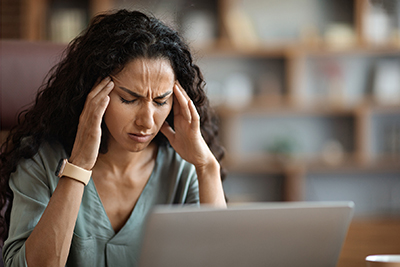 Why is pain so prevalent? Our lifestyle may be to blame for our pain. We know that stress, obesity, smoking, and unhealthy diets have negative impacts on chronic pain.
Why is pain so prevalent? Our lifestyle may be to blame for our pain. We know that stress, obesity, smoking, and unhealthy diets have negative impacts on chronic pain.
We know that when our diet lacks certain vitamins or minerals such as B vitamins, omega‑3 fatty acids, vitamin D, or magnesium, there is an association with increased pain sensation.
Stress can be another cause for the exacerbation of pain, as most of us know all too well. When we are in a state of stress, our bodies release cortisol, which in short bursts is a positive and adaptive response in our bodies and helps us overcome obstacles when necessary.[17] However, when stress becomes chronic (when we are experiencing it constantly, every day) cortisol becomes proinflammatory and feeds into the pain pathway.[18] Stress is also connected to pain through the limbic system.[19] As mentioned earlier, the transmission of the impulse of pain travels through the limbic system, so our perception of pain is influenced by our emotional state.[20] Stress stimulates the hypothalamic-pituitary-adrenal (HPA) axis, which will act in the limbic system influencing its activity, meaning it could be responsible for altering the perception of pain, therefore increasing its perception in many people.[21]
When we are in a state of stress, our bodies release cortisol, which in short bursts is a positive and adaptive response in our bodies and helps us overcome obstacles when necessary. However, when stress becomes chronic, cortisol becomes proinflammatory and feeds into the pain pathway.
How Can We Reduce Pain?
The most effective way to manage pain, in my opinion, is to follow a healthy lifestyle. This means focusing on a balanced diet with plenty of omega‑3–rich foods such as fish or nuts, vegetables, and fruits, and avoiding highly processed and sugary foods. It also means doing our best to keep our stress under control and to avoid activities such as smoking or excessive alcohol consumption, because we know that these practices lead to an increase in inflammation within our bodies.[22] If the pain still feels unmanageable, then we can use supplements to help reduce inflammation throughout our body and to decrease the transmission of pain signals. Supplements containing curcumin can be especially helpful for reducing pain and have even been compared to over-the-counter nonsteroidal anti-inflammatory drugs (NSAIDs) for their effectiveness.[23] Curcumin has anti-inflammatory properties and works by inhibiting the signalling of pro‑inflammatory cytokines.[24] Reducing inflammation in the body can lead to a reduction in the perception of pain.[25] Palmitoylethanolamide (PEA) is a fatty acid naturally produced in our bodies in response to injury or inflammation.[26] It has been found that, during times of chronic or prolonged inflammation, we can exhaust the levels of PEA, leading to a reduction in our ability to manage the associated pain.[27] Taking it in supplement form, however, can be effective for restoring its anti-inflammatory properties, therefore reducing pain.[28]
Supplements containing curcumin can be especially helpful for reducing pain and have even been compared to over-the-counter nonsteroidal anti-inflammatory drugs (NSAIDs) for their effectiveness.
While we can help manage pain with supplements, the best action we can take is to prevent inflammation and pain in the first place, by maintaining a generally healthy lifestyle.
 Dr. Kaitlyn Richardson, ND, HbSc
Dr. Kaitlyn Richardson, ND, HbSc
A naturopathic doctor in Milton, Ontario, with a clinical focus in sports and performance medicine, she believes in using individualized, holistic, and evidence-based strategies to help active individuals feel and perform their best.
drkaitlynrichardson.com
References
[1] Public Health Agency of Canada. Chronic pain. https://www.canada.ca/en/public-health/services/diseases/chronic-pain.html, 2022‑12‑02.
[2] Public Health Agency of Canada, op. cit.
[3] Canadian Pain Task Force. Canadian Pain Task Force: March 2021. https://www.canada.ca/en/health-canada/corporate/about-health-canada/public-engagement/external-advisory-bodies/canadian-pain-task-force/report-2021.html, 2021‑05‑12.
[4] International Association for the Study of Pain. Terminology. https://www.iasp-pain.org/resources/terminology/#pain, 2022‑04‑19.
[5] Fields, H. “The anatomy and physiology of pain.” Chapter 7 (p. 123–145) in: Osterweis, M., A. Kleinman, and D. Mechanic, eds. Pain and disability: Clinical, behavioral, and public policy perspectives. Washington (DC): National Academies Press, 1987, 320 p., ISBN 978‑0‑309‑03737‑2. Available from https://www.ncbi.nlm.nih.gov/books/NBK219252/.
[6] Fields, op. cit.
[7] Fields, op. cit.
[8] Fields, op. cit.
[9] Matsuda, M., Y. Huh, and R.‑R. Ji. “Roles of inflammation, neurogenic inflammation, and neuroinflammation in pain.” Journal of Anesthesia, Vol. 33, No. 1 (2019): 131–139.
[10] Matsuda, Huh, and Ji, op. cit.
[11] Dean, E., and A. Söderlund. “What is the role of lifestyle behaviour change associated with non-communicable disease risk in managing musculoskeletal health conditions with special reference to chronic pain?” BMC Musculoskeletal Disorders, Vol. 16 (2015): 87.
[12] Dragan, S., M.‑C. Șerban, G. Damian, F. Buleu, M. Valcovici, and R. Christodorescu. “Dietary patterns and interventions to alleviate chronic pain.” Nutrients, Vol. 12, No. 9 (2020): 2510.
[13] Dragan et al, op. cit.
[14] Dragan et al, op. cit.
[15] Dragan et al, op. cit.
[16] Dragan et al, op. cit.
[17] Hannibal, K.E., and M.D. Bishop. “Chronic stress, cortisol dysfunction, and pain: A psychoneuroendocrine rationale for stress management in pain rehabilitation.” Physical Therapy, Vol. 94, No. 12 (2014): 1816–1825.
[18] Hannibal and Bishop, op. cit.
[19] Abdallah, C.G., and P. Geha. “Chronic pain and chronic stress: Two sides of the same coin?” Chronic Stress, Vol. 1 (2017): 2470547017704763.
[20] Abdallah and Geha, op. cit.
[21] Abdallah and Geha, op. cit.
[22] Dean and Söderlund, op. cit.
[23] Paultre, K., W. Cade, D. Hernandez, J. Reynolds, D. Greif, and T.M. Best. “Therapeutic effects of turmeric or curcumin extract on pain and function for individuals with knee osteoarthritis: A systematic review.” BMJ Open Sport & Exercise Medicine, Vol. 7, No. 1 (2021): e000935.
[24] Paultre et al, op. cit.
[25] Paultre et al, op. cit.
[26] Clayton, P., M. Hill, N. Bogoda, S. Subah, and R. Venkatesh. “Palmitoylethanolamide: A natural compound for health management.” International Journal of Molecular Sciences, Vol. 22, No. 10 (2021): 5305.
[27] Clayton et al, op. cit.
[28] Clayton et al, op. cit.

 Stores
Stores
